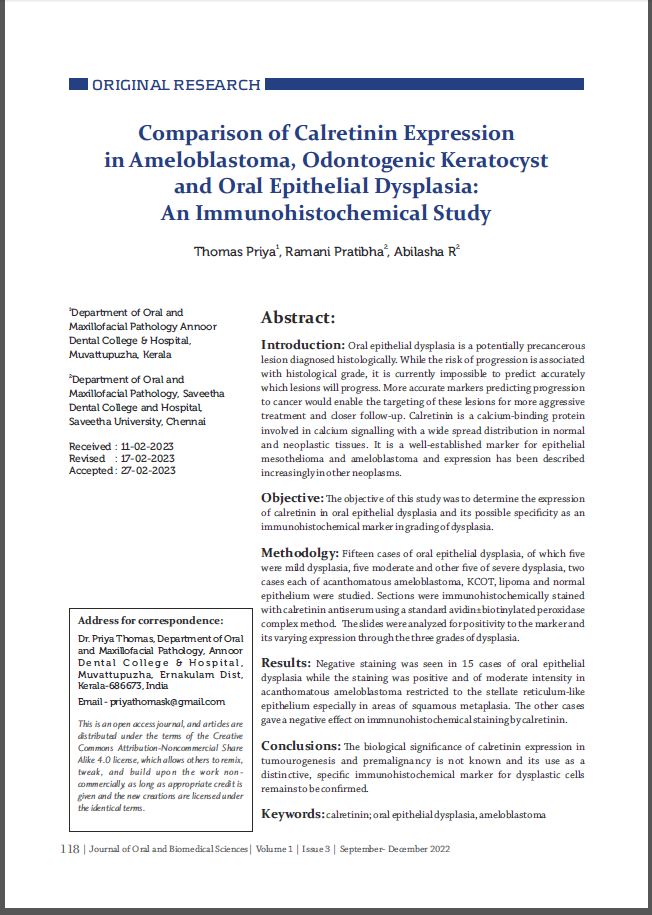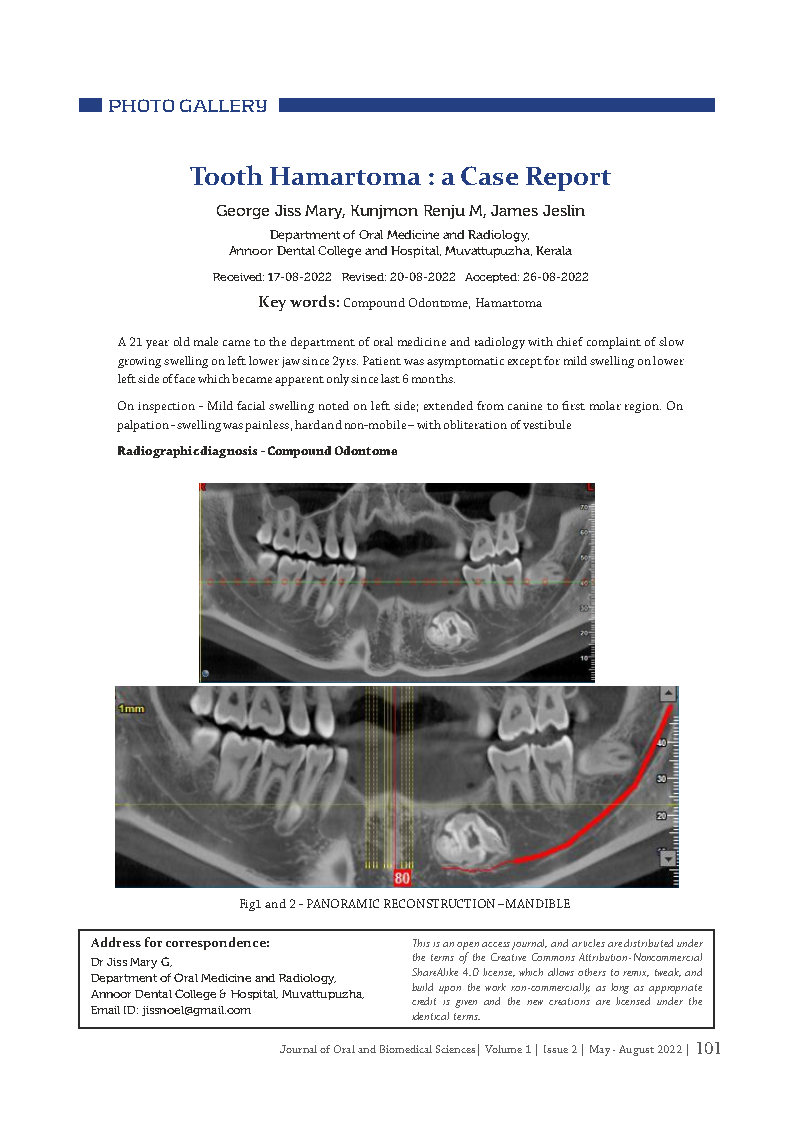Ectopic Molar in The Condylar Region: An Unusual Presentation
Impacted third molars are very common condition which we encounter in our daily practice. Ectopic teeth are those which are impacted in unusual positions or have been displaced from their normal anatomic locations. Ectopic mandibular third molars in the condylar region are rare and under reported. Most of the cases are seen in female patients with common signs and symptoms of pain, discomfort and swelling in the mandibular region or in the preauricular region with temperomandibular joint pain and discomfort. Here we report an asymptomatic case of ectopic third molar in the condylar region and follow up of the case with Cone Beam Computed Tomography (CBCT) imaging Keywords: Ectopic molar, Condylar region, impacted third molar, CBCT











